TORONTO — For the Toronto Blue Jays, there was bound to be an adrenaline dump following Friday’s ludicrous, rollicking, did-that-actually-just-happen comeback against the Texas Rangers, in which the club became only the third since 1901 to overcome a seven-run deficit on opening day, and laid down one hell of a marker as to their intentions for the season to come.
There’s an inevitable emotional hangover from pandemonium like that, and you can be sure every player felt the drag as the Blue Jays reported back to Rogers Centre for Game 2 of 162 only hours after they’d departed after Game 1, facing the first quick-turn, day-game-after-night-game test of the season. Put another way: everyone really needed their coffee for this one.
But what Blue Jays manager Charlie Montoyo really, really needed, looking at a reliever availability card full of yellows (could pitch if needed), oranges (use only in case of emergency) and, in Trent Thornton’s case, a full red (absolutely unavailable) after asking his bullpen to record the final 26 outs of Friday’s ordeal, was a strong start from Kevin Gausman.
Or a lengthy one, at least. Cough up some hits, some runs if you have to. Just scatter the damage over, say, five innings rather than condensing it into one — as Jose Berrios did the night prior — so that his bullpen isn’t underwater less than 48 hours into the season.
And that’s exactly what Gausman provided. Three runs on eight hits over five frames of work — about as extended as outings get with starters on strict pitch counts after a condensed spring — in a 4-3 Blue Jays victory over the Rangers on Saturday.
“What he did was huge,” Montoyo said. “Because of our bullpen. Even though we have plenty of guys. That was huge for him to do that. I think that was key to us winning this game, Gausman going into the fifth.”
Gausman struck out five along the way, keeping things close enough for Toronto’s quick-strike offence to do the rest. That started with a couple scratched-across runs in the first, and continued with a couple much louder ones later, as Bo Bichette launched his first homer of the season and Santiago Espinal continued to convert a winter’s hard work into tangible spring results, plating the go-ahead run with a hard, run-scoring double in the sixth.
That was the third ball to come off Espinal’s bat at 106 mph or faster over his first four plate appearances of the season. Do you know how many balls he put in play that hard over 246 plate appearances last season? Zero. Zilch. Not even one.
“Hard work pays off,” Espinal said. “And I'm just going to keep working hard for whatever opportunity I get with this team so we can get a W.”
Cynical observers scoffing at “best shape of my life” proclamations is as tired a spring training occurrence as the proclamations themselves. But the result of the 15-plus pounds Espinal added over the off-season is so far measurable and real. Will it last throughout the season, as the grind of daily training, nightly games, weekly travel, poor sleep and unideal nutrition wears him down? We’ll see. But you can’t argue with what he’s shown so far.
“I'm so glad that we came up with a plan so I can gain weight, get more muscle and be able to drive the ball more, way better than I did last year,” Espinal said. “It just feels a lot different from last year. I can tell by my swing. Even when I hit BP, I can actually tell the difference.”
Meanwhile, Gausman’s splitter was devastating, as per usual, generating 11 whiffs on 22 swings. His slider usage was higher than normal — something to monitor and possibly an insight into how he could continue evolving as a starter with his new team. And he flashed his changeup against left-handers, earning a pair of swinging strikes with a pitch that can be very useful for him when it’s on.
But the way Gausman located his fastball was particularly interesting, as he and catcher Alejandro Kirk worked it both down and on the arm-side of the plate against a lefty-laden Rangers lineup.
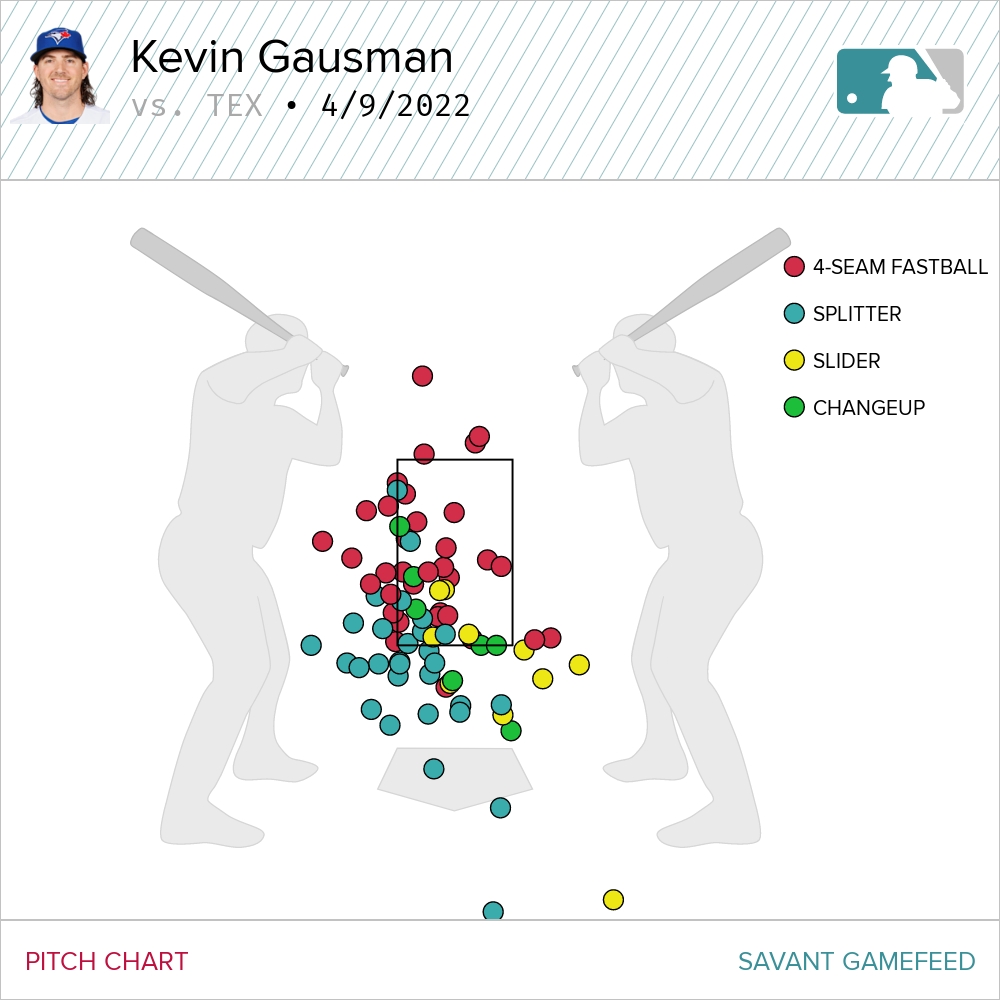
Gausman’s typical formula is simple to summarize — much less so to hit: Fastballs up, splitters down. Tunnelling the vastly different offerings while repeating a consistent arm angle and release point, making them indistinguishable from one another until it’s too late. Using that deception and unpredictable sequencing to keep hitters guessing. Trusting his stuff on the plate, believing that even if they do guess correctly, it’s nasty enough to avoid barrels for weak contact or to miss bats entirely.
This two-pitch sequence to Cody Bellinger from last season, in which Gausman follows up a 95-mph heater with an 85-mph splitter in the same lane, is a pretty good example:
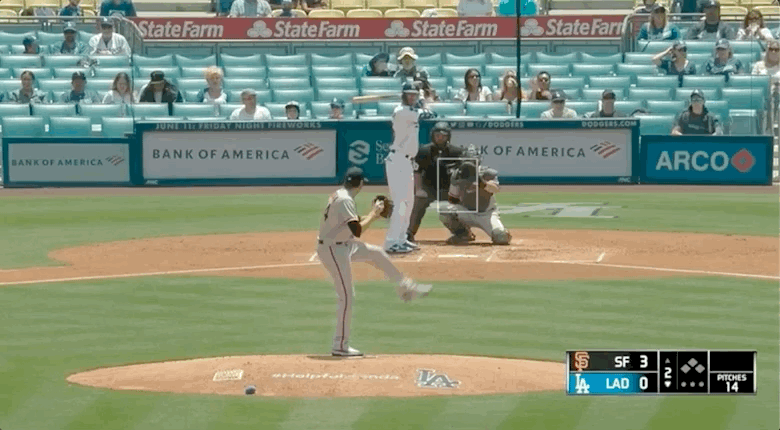
It's not so dissimilar from the approach Robbie Ray used atop the Blue Jays rotation last season to win the AL Cy Young. Here’s my primary pitch, a heavy heater. It’s on the plate. Try to hit it. Here’s my secondary pitch, a wicked slider in Ray’s case. It’s on the plate. I made it look an awful lot like my fastball out of my hand. Again, try to hit it.
And when the formula works as well as it has for Gausman and Ray, why complicate it any further? That’s why the Blue Jays are asking their catchers to set up right down the heart of the plate for Gausman, just as they did for Ray. Why they’re asking them to give him a clear target in the box, encouraging him to rip pitches in the zone and let them eat. It’s not a coincidence that Kirk, who caught 19 of Ray’s 36 starts as a Blue Jay, drew the assignment for Gausman’s debut Saturday.
“There's something about Kirk — he just follows the game plan,” Montoyo said. “And everybody who pitches to him, they like him. Cy Young last year liked him a lot, too.”
Ray used to rave about the way Kirk received pitches at the bottom of the zone, and the objective measures back him up. According to Baseball Savant, Kirk helped convert 61.7 per cent of the taken pitches he received at the bottom of the strike zone into called strikes, the highest mark of any qualified catcher in the game.

And if you’ve seen Gausman work before, you can imagine why the Blue Jays would pair these two together. But it may not only be for the obvious sake of stealing the right-hander a few strikes with his splitter at the knees.
To wit, here’s Kirk helping Gausman get a much-needed strike in a 3-0 count only four pitches in to Saturday’s game:
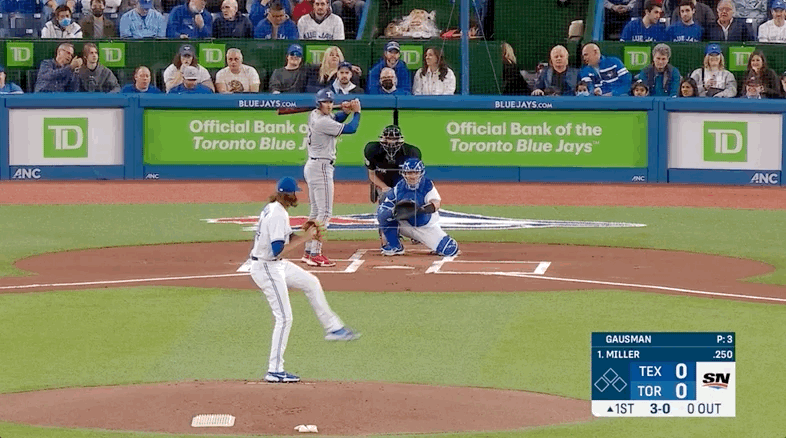
And here he is framing up another, helping Gausman even a count against Willie Calhoun with two out an inning later:
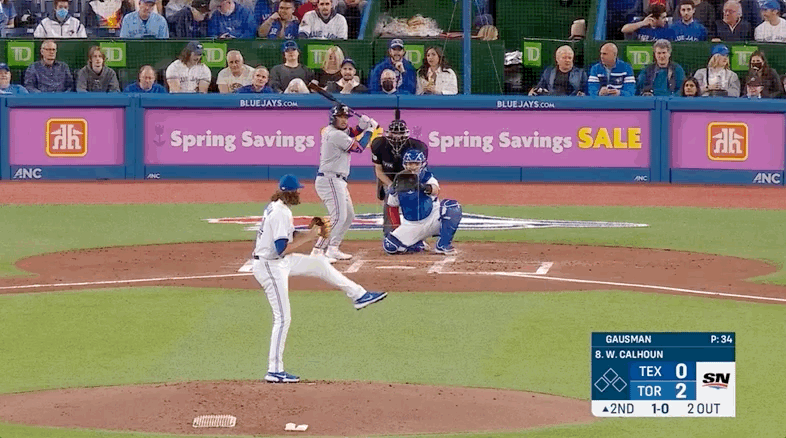
Then there was this one that got Gausman ahead of Corey Seager in a critical, third-inning spot with two runners in scoring position and none out:
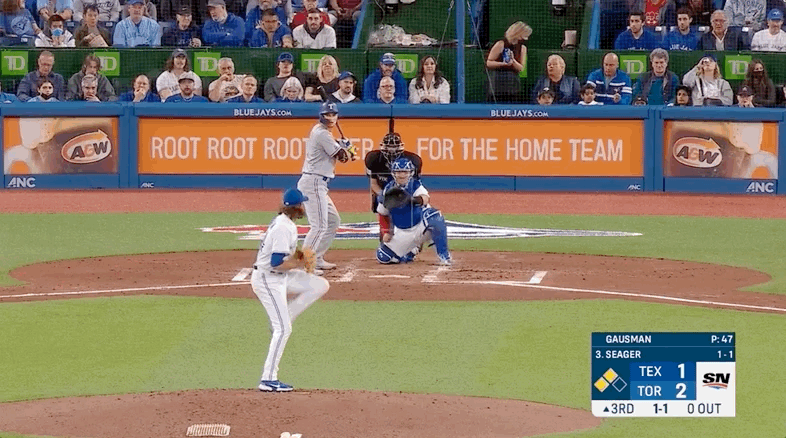
And finally, perhaps Kirk’s finest frame of the night, which stole another strike against Miller as Gausman was pushing up against his pitch count:
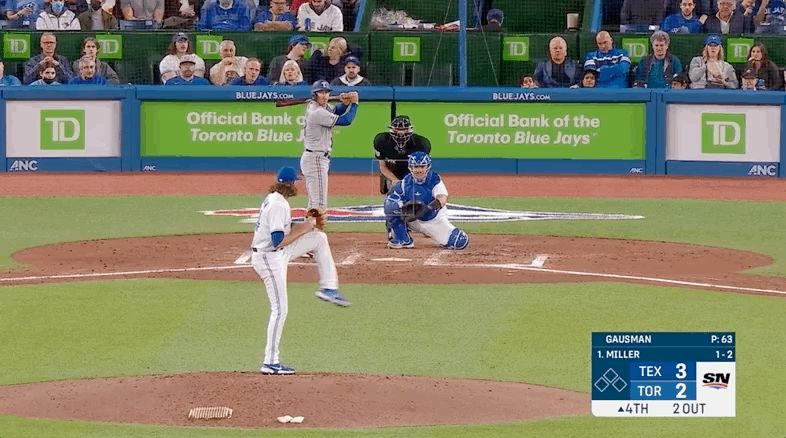
The commonality between those pitches? All fastballs. The same kind of heaters Kirk regularly helped Ray get called as strikes last season.
“He presents everything really well to umpires,” Gausman said. “He’s such a good low-ball catcher — he steals strikes down there. I thought there was a lot of strikes that we got tonight that maybe they missed. But he presents so well that at times it's kind of hard to know what adjustment you need to make because he just makes everything look like a strike.”
Now, it’s safe to say Gausman doesn’t want to be as consistently down with his fastball as he was Saturday. Elevating pitches is always going to be an important part of his game, as he creates vertical separation working north with fastballs and south with his splitter. And he has to work up because then his misses rise above the zone rather than over the heart of it. On an ideal day, he’s up in the zone with about 70 per cent of his heaters, and down about 30 per cent of the time.
But if he can start getting a few more fastball strikes down and on the edges, it’s only going to open up further avenues for him to sequence. Now, hitters can’t assume every pitch down in the zone is a splitter likely to end up near the dirt. It might just be a fastball Kirk will vacuum up at the knees for a called strike.
Just as pitchers can’t assume they’ll blow fastballs past Espinal’s bat any more — or that any pitch he puts in play can be gobbled up easily. Yes, it’s early in the season. Not everything we’re seeing now will stick. Mirages lie everywhere in the early days of an MLB season. But as the Blue Jays moved to 2-0 on the year, laying down another marker as to their intentions for the season to come, they did offer a couple interesting glimpses at how their players are working to evolve. And the results those evolutions could produce.







COMMENTS
When submitting content, please abide by our submission guidelines, and avoid posting profanity, personal attacks or harassment. Should you violate our submissions guidelines, we reserve the right to remove your comments and block your account. Sportsnet reserves the right to close a story’s comment section at any time.